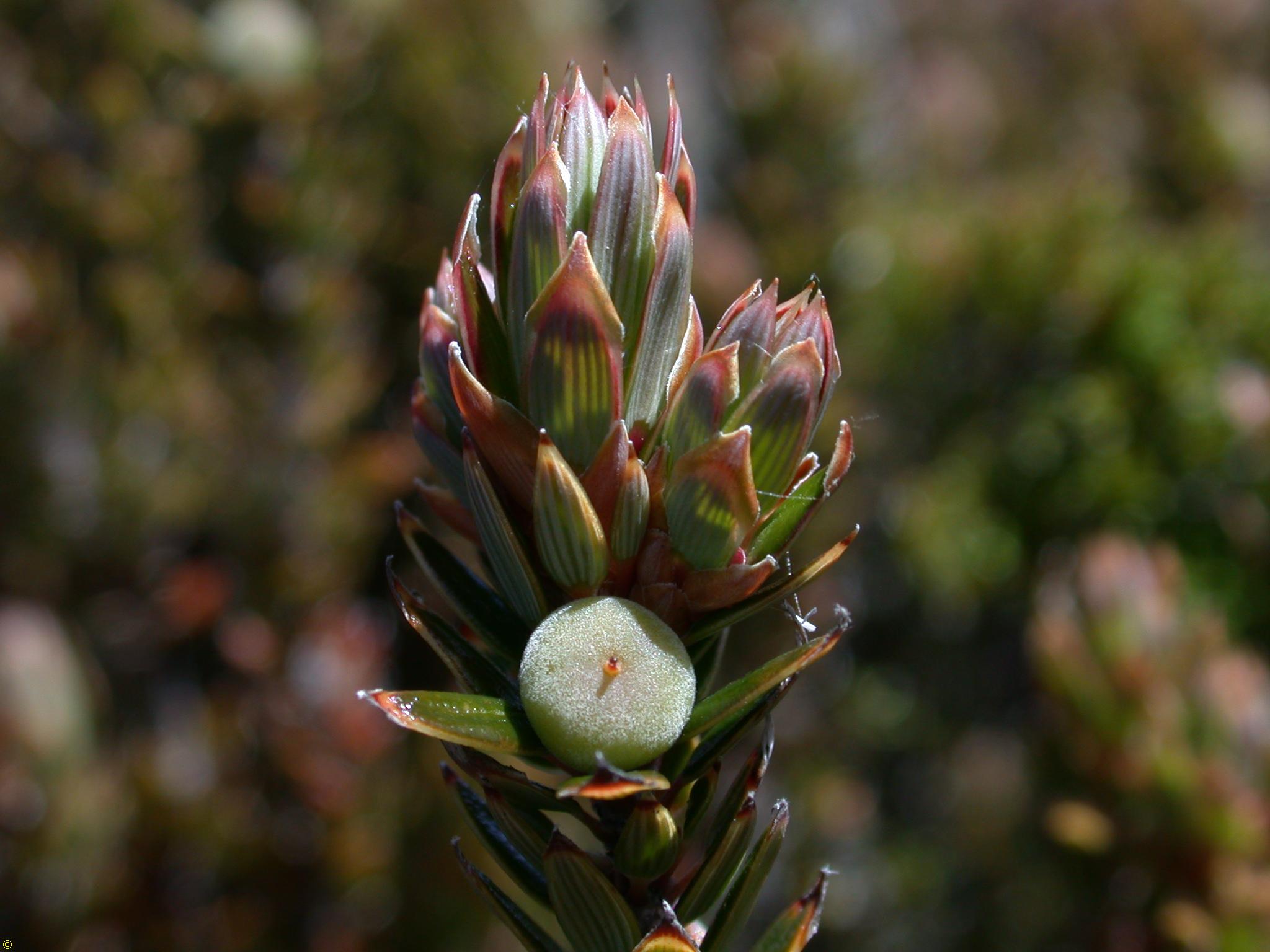Scientific Name: Planocarpa petiolaris Endemic Having a natural distribution confined to a particular geographic region
Common Name: alpine cheeseberry
Family Classification (Clade): Eudicots
Family: Ericaceae
Form Description: Grey-green shrub with many individual erect stems. Can be discriminated from Planocarpa sulcata by leaf size and the pattern of hairiness on the inside of the flower.
Height (m): 0.15 – 0.3
Flowers: White, hairy on the inner surface.
Fruit: Drupe – red or red-black, surface dull, round, flattened, 4–7 mm diameter
Municipality
Plant Communities
Habitat Notes
Common in exposed alpine heath and coniferous heath on shallow soils in the eastern and central mountains.
Site Tolerance
Exposed, Moist, Rocky, Windy
Soil Tolerance
Nutrient-poor, Well-drained
Frost Tolerance
Hardy
General Notes
Growth habit and fruit make this an ideal plant for containers and gardens. Should do best in well drained, light to medium soils with dappled shade.
Propagation Calendar
-
Flowering Month
Jan Feb Mar Apr May Jun Jul Aug Sep Oct Nov Dec -
Seed Collecting Month
Jan Feb Mar Apr May Jun Jul Aug Sep Oct Nov Dec -
Sowing Month
Jan Feb Mar Apr May Jun Jul Aug Sep Oct Nov Dec -
Cutting Month
Jan Feb Mar Apr May Jun Jul Aug Sep Oct Nov Dec
Propagation Method
Seed Information
Seed Collection
Difficult to grow from seed. Masticate seed, leave on a hot window sill or store in paper bags and then remove dried seed case.
Seed Treatment Method
Fermentation Collect fleshy fruits in a plastic bag, mash up and allowed to ferment to replicate digestion by a bird.
Seed Treatment Notes
Seeds will germinate better after passing through a bird.
Cutting & Division Information
Difficult to grow from cuttings. Extreme care is needed when handling the typically fine roots of members of the Ericaceae family. May be propagated by aerial layers.
